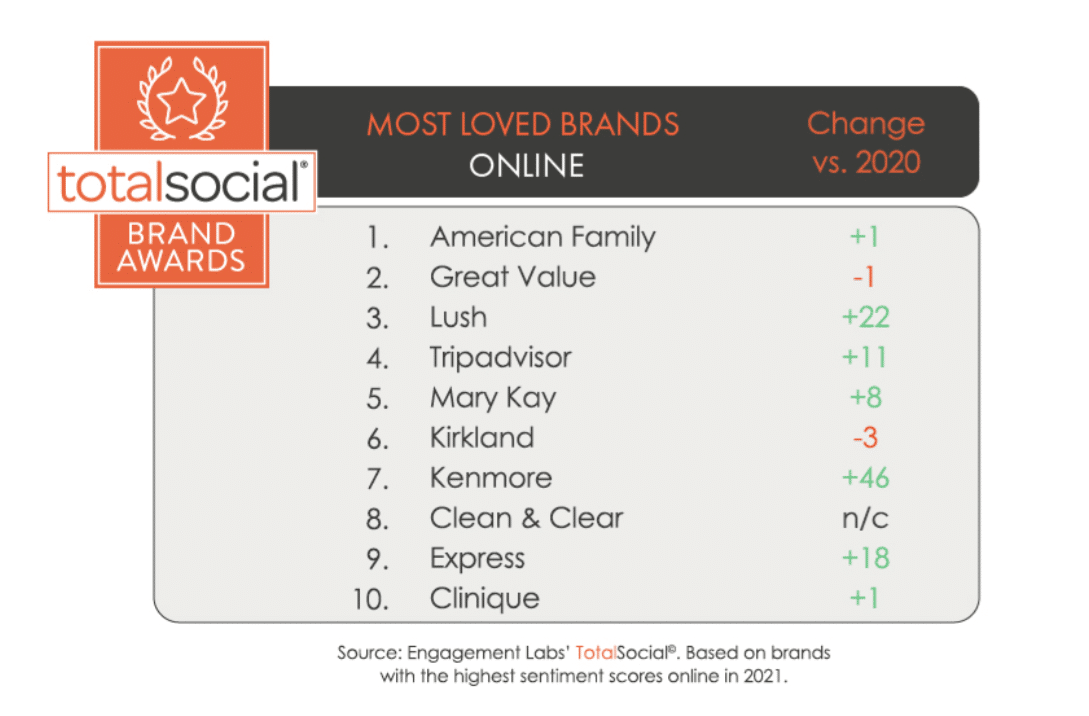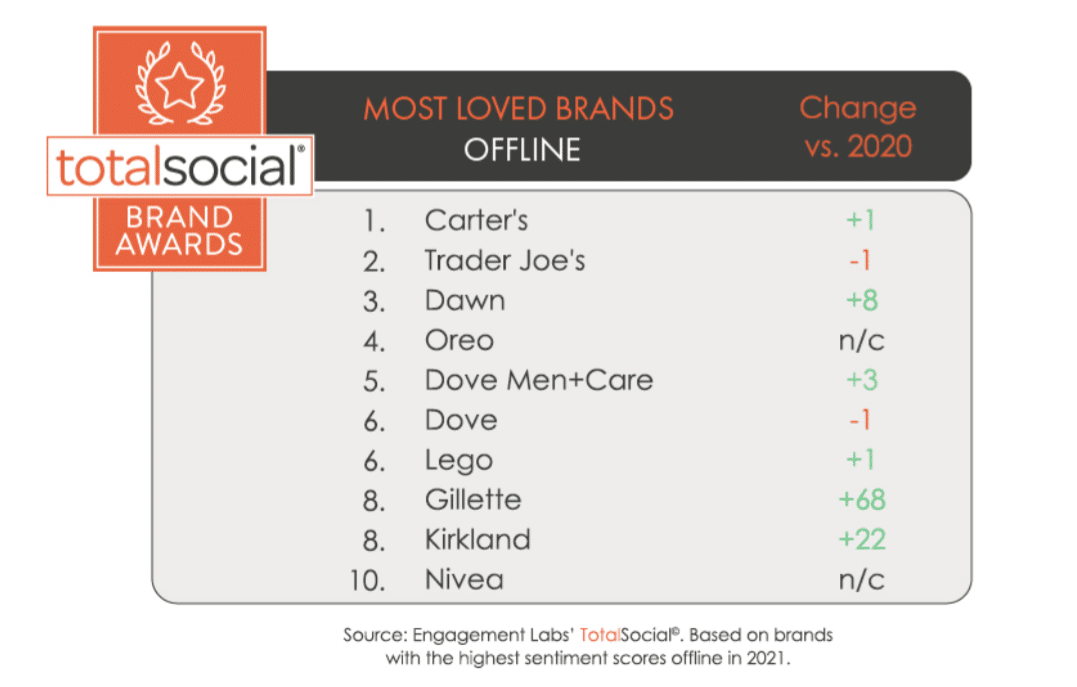Which brands do consumers consider to be their most loved? According to the fifth annual ranking of America’s “most loved” brands from Engagement Labs, which combines online social media listening and offline word of mouth social data with predictive analytics.
Carter’s, the retailer of children’s apparel ranks first while Trader Joe’s, the American grocery store, moved down to the second top spot of the list of brands most positively talked about in offline conversations, ahead of more than 650 brands across all consumer categories.
Meantime, Great Value, a Walmart brand, and American Family Insurance also switched places for the top positions for the most loved brands in online talk.
“This year’s TotalSocial Most Loved Brands exhibit the vital consumer emotional connection with brands and demonstrates how the brand marketers have built and found opportunities even during the past two years of pandemic,” said Steven Brown, president of Engagement Labs, in a news release. “Brand love has been a major part of our work with Fortune 500 brands and continues to be a focus in 2022.”
Costco’s Kirkland is the only brand to rank among brands both online and offline that shows the importance of marketing strategies that seek to activate both channels in driving business performance. Gillette’s improvement in offline brand love grew the most last year than any other top 10 brand. Gillette has not been shy of the weighing in real-world conversations in social issues with ads such as toxic masculinity that demonstrates that when it comes to offline, its positive word of mouth rise above and resonates with consumers.
Last year’s net sentiment of consumer conversations is positive for everyday categories such as beauty and personal care, children’s products, food and home. The importance of positive sentiment prevails as the “Great Resignation” ensues and more people adjust to hybrid lifestyle and preferring to stay at home to work remotely.
This analysis ranks the most loved brands based on net positive conversations happening online (via social media) and offline (via face-to-face conversations as well as phone, emailing, texting, IM’ing, video chat—in other words, via any channel other than posting on social media) to determine its annual TotalSocial Brand Awards winners.
The difference between offline and online conversations
Online and offline discussions are two entirely different conversations, generally unrelated to each other, as Engagement Labs articles have shown in the Journal of Advertising Research and the MIT Sloan Management Review. Both types of conversations have an impact that leads to sales, but they do so very differently, and they require different marketing strategies. According to Engagement Labs data and analytics 19 percent of all consumer purchases are driven by these kinds of consumer conversations.
“The modified life and return to some normality during 2021 reflect the brands on our ‘most loved’ brands list and brand landscape of who’s earning the most positive recommendations from consumers,” said Brown. “The rise of Lush, Trip Advisor, Kenmore, Mary Kay and Express online, as well as Dawn, Gillette, and Kirkland in the offline space reveals what consumers engage and talk about with great sentiment for the past year.”
“The goal of marketers is to be successful in achieving more positive conversations, both online and offline, to ultimately become ‘Conversation Commanders,’ as we have labeled the most successful brands in both conversation arenas. To achieve this, marketers need to have two separate measurement and marketing strategies, to make sure these separate, but equally important conversations are maximized.”






